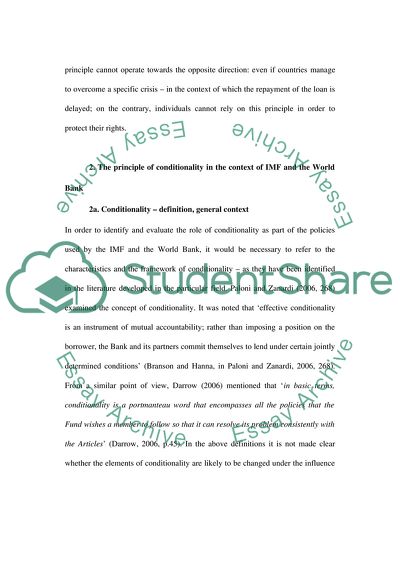Cite this document
(Principle of Conditionality as Applied by The IMF and The World Bank Research Paper, n.d.)
Principle of Conditionality as Applied by The IMF and The World Bank Research Paper. Retrieved from https://studentshare.org/finance-accounting/1736983-principle-of-conditionality-as-applied-by-the-imf-and-the-world-bank
Principle of Conditionality as Applied by The IMF and The World Bank Research Paper. Retrieved from https://studentshare.org/finance-accounting/1736983-principle-of-conditionality-as-applied-by-the-imf-and-the-world-bank
(Principle of Conditionality As Applied by The IMF and The World Bank Research Paper)
Principle of Conditionality As Applied by The IMF and The World Bank Research Paper. https://studentshare.org/finance-accounting/1736983-principle-of-conditionality-as-applied-by-the-imf-and-the-world-bank.
Principle of Conditionality As Applied by The IMF and The World Bank Research Paper. https://studentshare.org/finance-accounting/1736983-principle-of-conditionality-as-applied-by-the-imf-and-the-world-bank.
“Principle of Conditionality As Applied by The IMF and The World Bank Research Paper”, n.d. https://studentshare.org/finance-accounting/1736983-principle-of-conditionality-as-applied-by-the-imf-and-the-world-bank.


